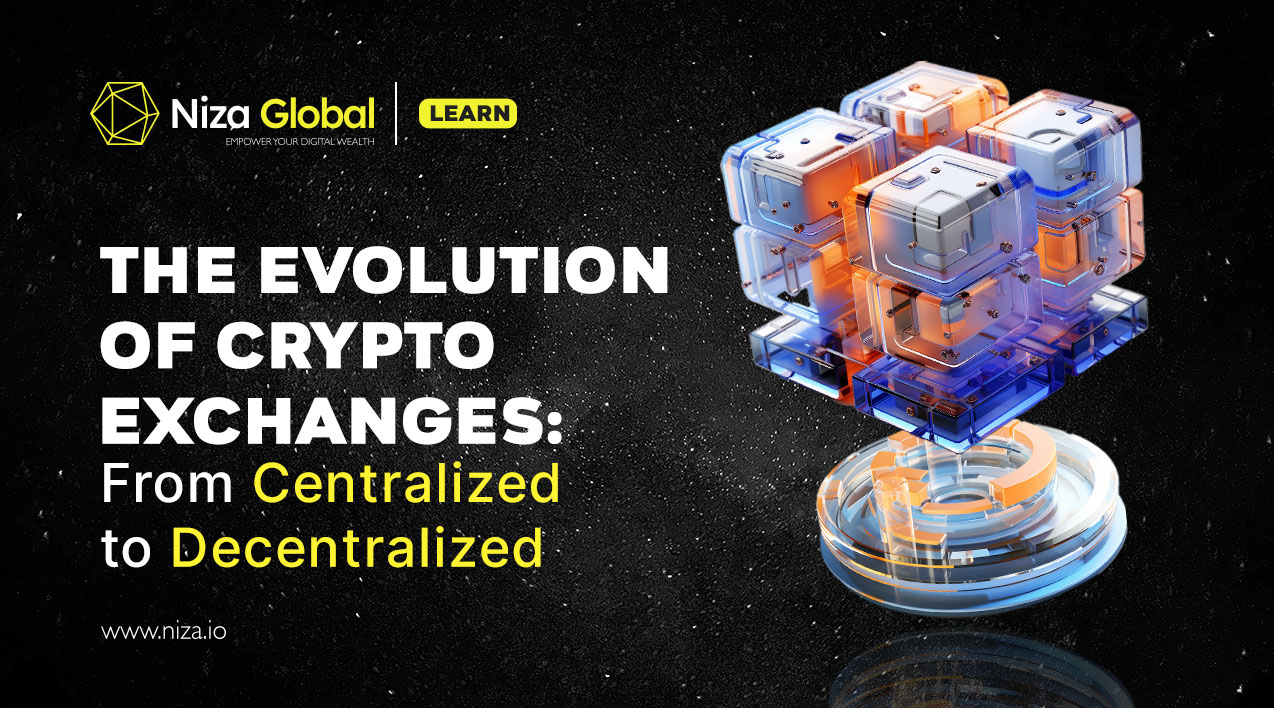The cryptocurrency world has experienced tremendous growth since Bitcoin’s creation in 2009. Alongside this evolution, cryptocurrency exchanges have transformed, adapting to the needs of a rapidly changing market. The shift from centralized models to decentralized platforms represents a significant milestone in how digital assets are traded, managed, and stored. This change aligns with broader trends in the blockchain space, focusing on security, transparency, and user control.
This article explores the journey of cryptocurrency exchanges, comparing centralized and decentralized models while analyzing their benefits and challenges. Understanding these dynamics provides insights into the future of blockchain platforms and digital asset trading.
The Rise of Centralized Crypto Exchanges
Early Days of Cryptocurrency Trading
In the early stages of cryptocurrency, trading was a niche activity, often carried out through informal channels such as online forums or direct peer-to-peer transactions. As interest in Bitcoin and other cryptocurrencies grew, the need for formalized trading platforms became evident, leading to the emergence of centralized cryptocurrency exchanges. These platforms provided a structured environment for buying, selling, and storing digital assets.
Centralized Exchanges (CEXs)
Centralized exchanges (CEXs) quickly became the dominant model for cryptocurrency trading. They operate like traditional stock exchanges, where users create accounts, deposit funds, and trade cryptocurrencies via the exchange’s order book. Acting as intermediaries, CEXs manage users’ funds, execute trades, and ensure liquidity.
Key Features of Centralized Exchanges
- User-Friendly Interface: CEXs are designed with intuitive interfaces, making them accessible to newcomers and fostering widespread adoption.
- Liquidity: High trading volumes on CEXs provide deep liquidity, enabling traders to execute large orders with minimal price impact.
- Customer Support: Many centralized exchanges offer customer service to resolve issues related to accounts, deposits, withdrawals, and trading.
- Advanced Tools: Features like margin trading, futures contracts, and staking options cater to novice and professional traders.
Challenges of Centralized Exchanges
Despite their advantages, CEXs face significant challenges:
- Security Risks: As prime targets for hackers, CEXs have suffered high-profile breaches, such as the Mt. Gox hack in 2014.
- Lack of User Control: Users don’t control their private keys, making their funds vulnerable if the exchange is compromised.
- Regulatory Pressure: CEXs face scrutiny, with regulations leading to trading restrictions, mandatory KYC procedures, or even closures.
- Centralization: The centralized nature of CEXs contradicts blockchain’s decentralized ethos, sparking criticism within the crypto community.
The Emergence of Decentralized Exchanges (DEXs)
What Are Decentralized Exchanges?
Decentralized exchanges (DEXs) emerged to address the limitations of centralized platforms. Unlike CEXs, DEXs operate without a central authority, using blockchain technology and smart contracts to facilitate peer-to-peer trading.
Key Features of Decentralized Exchanges
- Trustless Transactions: Users retain control over their private keys, with trades executed directly on the blockchain.
- Privacy: DEXs typically do not require KYC procedures, enhancing user privacy.
- Censorship Resistance: Free from central control, DEXs are less susceptible to censorship and regulatory constraints.
- Global Accessibility: DEXs are available to anyone with an internet connection and a crypto wallet, enabling global participation.
The Rise of Automated Market Makers (AMMs)
AMMs revolutionized the DEX space by introducing liquidity pools instead of traditional order books. Platforms like Uniswap and PancakeSwap enable users to provide liquidity and earn fees.
How AMMs Work
Liquidity providers (LPs) deposit token pairs into smart contracts, forming pools. An algorithm determines token prices based on pool ratios, enabling continuous trading even in low-liquidity environments.
Challenges of Decentralized Exchanges
DEXs also face hurdles:
- Liquidity Issues: Low trading volumes for certain tokens can lead to higher price slippage.
- Complexity: Steeper learning curves and less intuitive interfaces deter some users.
- Smart Contract Risks: Bugs in smart contracts can lead to fund losses.
- Scalability: Blockchain network congestion can result in higher fees and slower transactions.
The Hybrid Model: Bridging Centralized and Decentralized Features
Hybrid exchanges combine the strengths of CEXs and DEXs, offering security, liquidity, and user control.
Key Features of Hybrid Exchanges
- Custodial and Non-Custodial Options: Users can choose between centralized and decentralized trading options.
- Cross-Chain Trading: Hybrid platforms enable seamless trading across blockchains.
- Enhanced Security: Features like multi-signature wallets and smart contracts improve security.
- Regulatory Compliance: Optional KYC processes ensure adherence to regulations while maintaining user privacy.
The Future of Crypto Exchanges
Regulation’s Role
As governments regulate the growing crypto market, hybrid exchanges may emerge as a balanced solution, blending decentralization with compliance.
Interoperability
Cross-chain solutions will gain prominence, allowing seamless trading across networks.
Mainstream Adoption
User-friendly interfaces, robust security, and compliance will attract more users to the crypto space.
Conclusion
The evolution of crypto exchanges mirrors the blockchain industry’s growth. While centralized exchanges provide liquidity and usability, they face security and regulatory challenges. Decentralized exchanges offer control and privacy but grapple with liquidity and scalability issues. Hybrid models promise an innovative future, combining the strengths of both. As crypto adoption expands, exchanges will remain vital to the digital asset ecosystem, shaping how we trade and manage digital currencies in an interconnected world.


